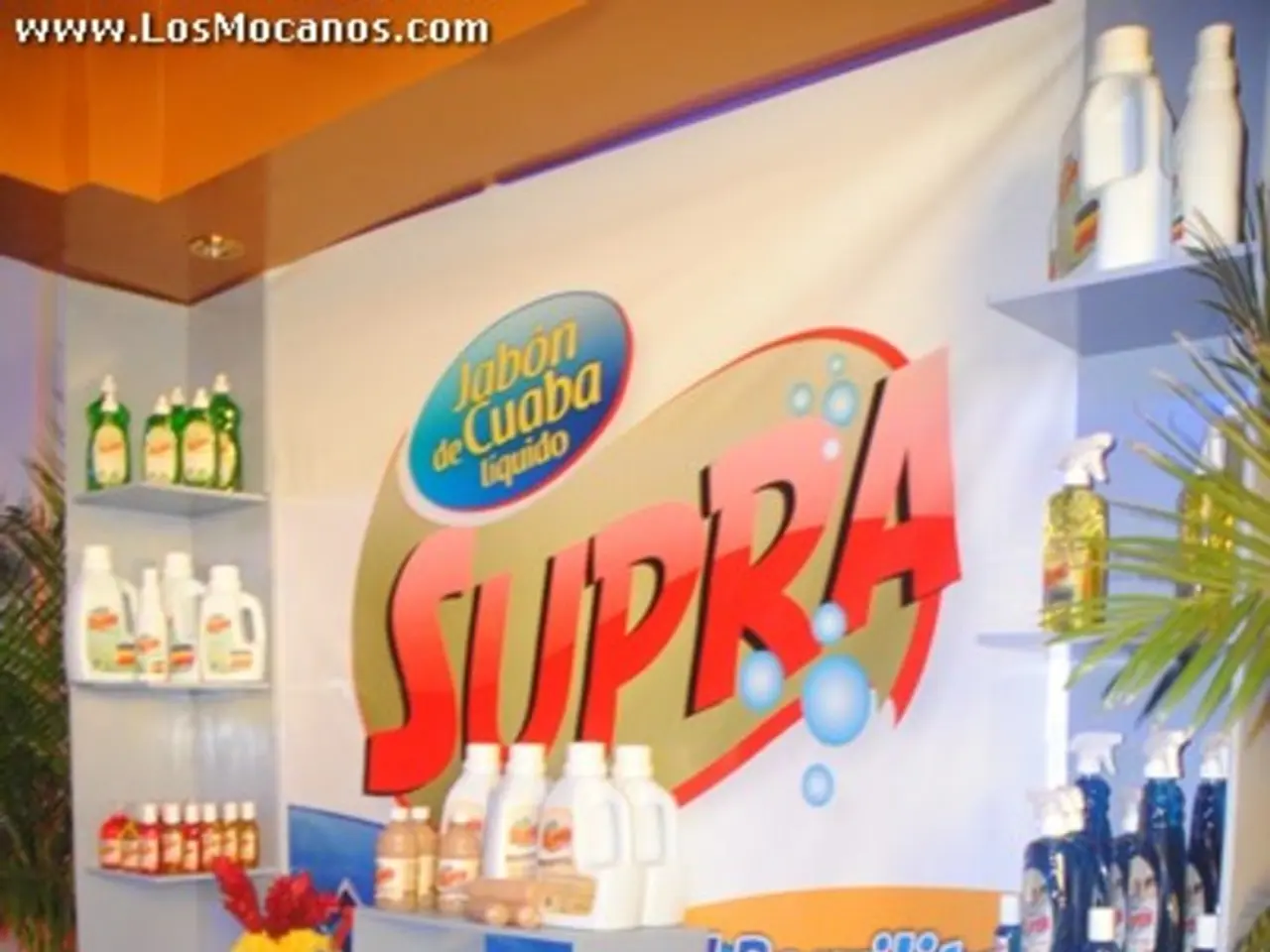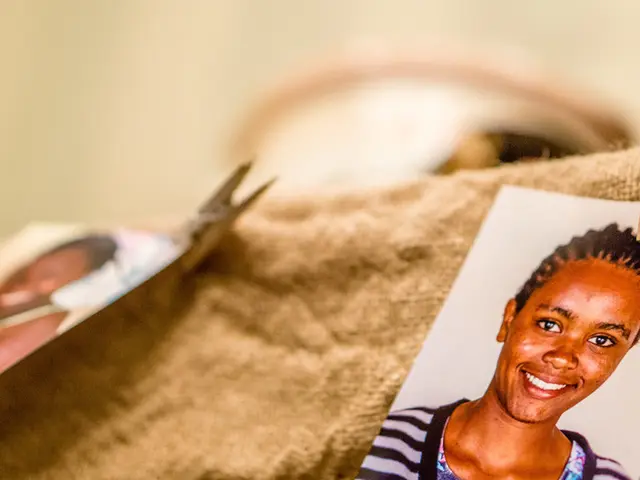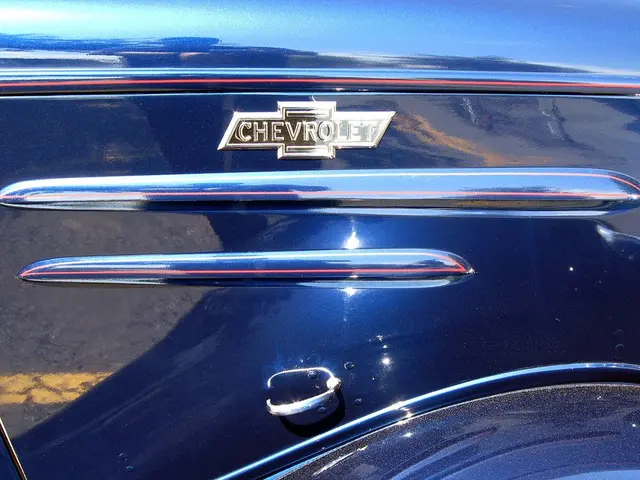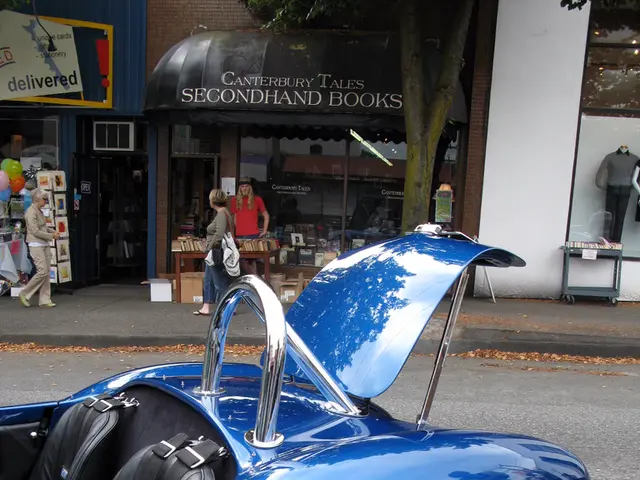Stock suffers penalties and downgrade: Could the long-term investment staple become obsolete now?
In the dynamic world of beauty care, L'Oréal, a French cosmetics giant, has been navigating a series of headwinds that have led to downgrades by prominent analysts like Barclays and JPMorgan. Despite these challenges, the company's financial strength and leading market position remain noteworthy.
Barclays recently downgraded L'Oréal from "Overweight" to "Underweight," lowering its price target from €384 to €325. This decision was based on concerns that L'Oréal's beauty market outperformance has declined in 2024 to 1.1x, below its 20-year average of 1.2x. Barclays highlighted several challenges, including pressure in US and China markets, shifts in e-commerce disrupting sales channels, increasing competition, and disruptive trends in beauty routines. Barclays projects like-for-like growth of 4.1% for 2025 and 5.2% for 2026, slightly below market consensus.
However, L'Oréal's solid fundamentals remain evident. The company boasts impressive gross profit margins of 74.2%, a relatively low debt-to-equity ratio of 0.16, and stable liquidity ratios. Its price-to-earnings (P/E) ratio stands around 31, with a dividend yield of about 1.9%, indicating reasonable income for shareholders. Its beta of 0.87 suggests it is less volatile than the overall market, which may appeal to more conservative long-term investors.
The average analyst rating currently sits at "Hold," reflecting a mix of buy, hold, and sell opinions. Royal Bank of Canada recently upgraded the stock to "Outperform," indicating that some analysts still see value in L'Oréal’s growth potential. However, two analysts have issued sell ratings, reflecting the recent cautious sentiment.
Boersenmedien AG, which holds the rights to the index used as the underlying for the price of the financial instruments, has concluded a cooperation agreement with the issuer of these instruments. Meanwhile, JPMorgan downgraded L'Oreal's status to "negative catalyst watch" after the published sales figures for the second quarter. JPMorgan analyst Celine Pannuti expects comparable basis growth of 2.5 percent for L'Oreal's second quarter.
Despite the current challenges, L'Oréal's business model continues to be promising, with growth driven by brands like Garnier and Maybelline, and strengthening through smaller brands like Color Wow. For a long-term investment, the decision depends on one's risk appetite and belief in L'Oréal’s ability to innovate and navigate competitive pressures. If you believe the company's brand strength and resilient fundamentals will prevail through challenges, L'Oréal could still be a good holding. However, tempered expectations should be maintained, as growth may be slower than in prior years.
L'Oréal is included in the Stocks for Eternity Index by BÖRSE ONLINE, underscoring its potential for long-term investment. Existing investors can continue to hold L'Oréal, while new investors should closely observe the further development of the company. Despite the high valuation, it does not yet reflect the reduced above-average business performance compared to competitors.
- Investors considering long-term opportunities in the stock-market might find L'Oréal, with its strong financial fundamentals and solid brand portfolio, an attractive option for investing in the beauty sector, despite the temporary headwinds and downgrades by analysts.
- Even though L'Oréal has faced challenges in the beauty market, such as pressure in US and China markets, shifts in e-commerce, and increased competition, the company's favorable financial indicators, such as a low-debt-to-equity ratio, stable liquidity ratios, and reasonable income for shareholders, demonstrate its resilience and potential for investing in the finance sector.




